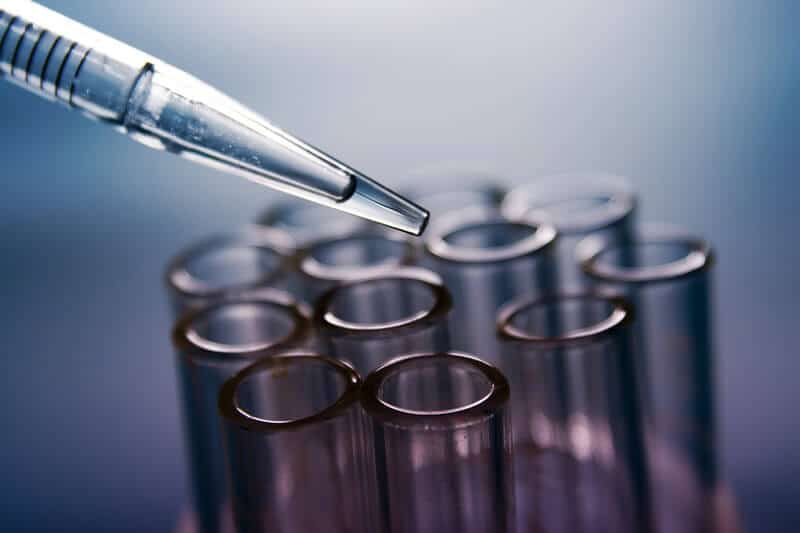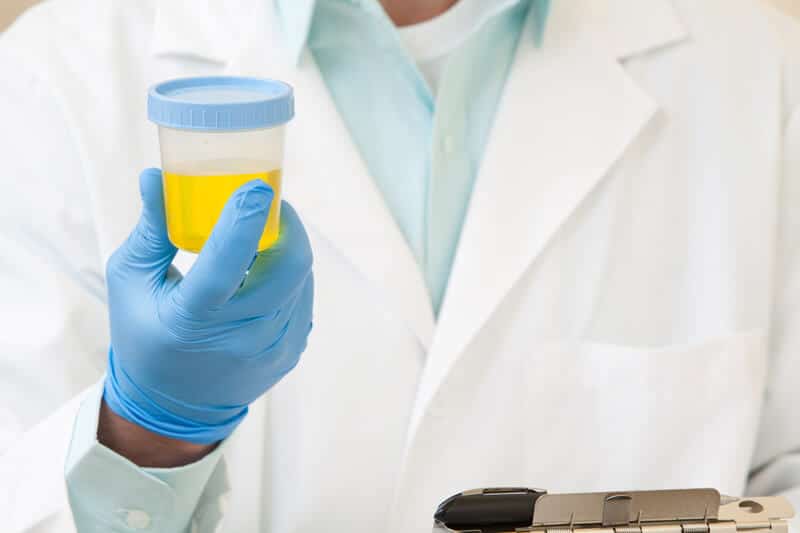The 10-panel urine drug test is very popular for employers, individuals and probation drug testing. This ten-panel drug test is screening and confirming for both illicit drugs and illicit use of prescription drugs. There is a standard 10-panel drug test along with the 10—panel drug test with expanded opiates. The 10—panel drug test with expanded opiates is often called a 10 panel DOT Like.
Standard 10 Panel Drug Test
- Marijuana
- PCP (Phencyclidine)
- Cocaine
- Amphetamines
- Opiates (Codeine, Morphine & Heroin)
- Benzodiazepines
- Barbiturates
- Propoxyphene
- Methadone
- Methaqualone (Quaaludes)
10 Panel with Expanded Opiates (DOT Like)
- Marijuana
- PCP (Phencyclidine)
- Cocaine
- Amphetamines (Methamphetamine, MDMA Ecstasy)
- Opiates (Codeine, Morphine, Heroin, Hydrocodone, Hydromorphone, Oxycodone & Oxymorphone)
- Benzodiazepines
- Barbiturates
- Propoxyphene
- Methadone
- Methaqualone (Quaaludes)
The term DOT Like is referring to the first five drugs and having them test exactly like what is required by the United Stated Department of Transportation (DOT). If you note above the 10 Panel with Expanded Opiates (DOT Like) has added metabolites being test for on the Amphetamines panel and the Opiates panel. The 10 Panel with Expanded Opiates (DOT Like) is highly recommended for a more inclusive testing panel recognizing drug abuse we are currently seeing in the United States.
Instant testing or Point of Collection Testing (POCT) is also available at our Quest Diagnostics or LabCorp testing facilities. This ten-panel instant test includes marijuana, PCP, amphetamines, methamphetamines, opiates, cocaine, benzodiazepines, barbiturates, methadone, propoxyphene & oxycodone. With the oxycodone added it has 11 metabolites, but we call it a 10-panel instant drug screen. When instant testing screens for a metabolite as positive, the specimen must go to the lab for confirmation testing. Order Now Your 10-Panel Instant Drug Test.
Drug usage amongst employees in a workplace or, worse yet, while operating heavy machinery for transportation needs, is not just unsafe, it is unethical and illegal.
People that use drugs while working are putting themselves and others at risk through a much higher chance of error thanks to the altered state of consciousness, drugs at work can cause, or the residual effects that still linger when a person tries to work after the immediate effects have worn off.
Drugs can have a variety of different effects, from the outright hallucinations of psychedelic substances to the manic behavior of cocaine that can severely impact both decision making and professional relationships in the workplace.
Lets learn about the 10-Panel Drug Test which can be a lab test or an instant (rapid) test. With the instant test if positive a confirmation test is needed at the lab with gas chromatography, mass spectrometry (GC/MS). The ten panel drug test is a combination of street drugs or illicit drugs and prescribed drugs. An outcome of a negative result is always preferred.

When ordering a 10 panel drug test, be sure you are getting what you are asking for. The 10 panel drug test includes marijuana, PCP, amphetamines, opiates (codeine, morphine & heroin), cocaine, benzodiazepines, barbiturates, methadone, propoxyphene, & methaqualone (Quaaludes). This 10 panel does not include Opioids or synthetic opiates such as Hydrocodone, Hydromorphone, Oxycodone and Oxymorphone. These are included in what is called the expanded opiate testing or DOT Like testing in this case also referred to as a 10 pane DOT Like drug test.
DOT Like indicates that the first 5 drugs on the panel are exactly the same as the required testing for employers regulated by the Department of Transportation (DOT).
Casting A Wide Net
A 10 panel drug test is merely one configuration of a general type of drug testing known as panel drug testing. Panel drug tests are designed to screen for numerous types of drugs from only one sample, which makes them very efficient, since it means that employers don’t have to lose too much time from workers repeatedly giving multiple samples, and the employees themselves don’t experience as much of an imposition on their time or their biology with too many tests.
The industry has a standard panel of drugs typically in the 10 panel drug test. This panel includes: AMP-Amphetamines (including MAMP-Methamphetamine, MDMA-Ecstasy); COC-Cocaine: OPI-Opiates (including codeine, morphine and heroin); PCP-Phencyclidine; THC-Marijuana; BZO-Benzodiazepines BAR-Barbiturates; MTD-Methadone; PPX-Propoxyphene; and Meth – Methaqualone. National Drug Screening always recommends ordering the 10 panel drug test with expanded opiates.
While we offer the 10 panel drug test, this type of testing is available for different numbers of drugs depending on the professional requirements a company may have. There are 5, 7, 10, and 12 panel drug tests available on the general market, but all of them fulfill the same function; with just one sample, they can screen for a select number of drugs. All of our drug test options with urine or hair can be ordered online – Order Now.
What Drugs Are In The 10 Panel Drug Test
Amphetamines & Methamphetamine
These are addictive stimulant drugs that strongly activate certain systems in the brain. Both pharmaceutical and street forms of amphetamine have a very high potential for abuse and carry significant risk of addiction. Methamphetamine or Meth is closely related chemically to amphetamine, but the central nervous system effects of methamphetamine are greater. Also included is MDMA, often called ECSTASY and is a synthetically produced drug.
Cocaine
Opiates
Referring to including codeine, morphine, and heroin; opiates, sometimes referred to as narcotics, are a group of drugs which are used medically to relieve pain, but also have a high potential for abuse. Some opiates come from a resin taken from the seed pod of the Asian poppy. Heroin (“junk,” “smack”) accounts for 90 percent of the opiate abuse in the United States. Sometimes opiates with legal medicinal uses also are abused.
Expanded Opiates
PCP or Phencyclidine
Marijuana or THC
The main active chemical in marijuana is THC (delta-9-tetrahydrocannabinol). Short-term effects of marijuana use include problems with memory and learning; distorted perception; difficulty in thinking and problem-solving; loss of coordination; and increased heart rate, anxiety, and panic attacks. Marijuana used can lead to many negative consequences, including bad grades, broken friendships, family problems and trouble with the law.
Benzodiazepines
Barbiturates
These are depressants that produce a wide spectrum of central nervous system depression from mild sedation to coma. They also have been used as sedatives, hypnotics, anesthetics, and anticonvulsants. Barbiturates are abused by swallowing a pill or injecting a liquid form. Barbiturates are generally abused to reduce anxiety, decrease inhibitions, and treat unwanted effects of illicit drugs. Barbiturates can be extremely dangerous because overdoses can occur easily and lead to death.
Methadone
Propoxyphene
Methaqualone
This drug is often called quaaludes and difficult to find in the United States. Laboratories are still seeing some quaalude positives on drug test. During the 70s and 80s, quaaludes gained significant popularity as a favored party drug among America’s affluent class, as depicted in the renowned scenes from The Wolf of Wall Street. These sedatives were known for their potent sedative effects.
Screening Your Preferences
The 10 panel drug test, like all panel drug tests, can be configurable. The specific drugs that you would like to have screened can be included in the panel, while the drugs that aren’t relevant or common to your industry can be left out. So, for example, if you are more concerned with detecting the presence of prescription drugs rather than proscribed substances such as cocaine, the selected substances can be included in your test. If your focus is more specifically on opiates and opioids than anything else, it’s possible for those particular drugs to be configured into your test requirements. Note that custom panels might be more expensive than the standard panels.
Ultimately, the major advantage of a 10 panel drug test is that the choice is yours. Different companies will have different interests in terms of what they would like to screen for. A company with an extensive trucking fleet is going to focus on a different range of drug tests from a company that is largely confined to traditional office activities. A 10 panel drug test can cater to both. Note that DOT regulated trucking companies are currently required to use the DOT 5 panel drug test.
How It Works
The 10 panel drug test, as with the other panel tests, is very simple to administer because it relies on a urine sample. Urine testing works in a simple fashion; many drugs used will linger in the body even days after usage. Alcohol is not one of these substances, as a single ounce can pass through the system and evade drug panel detection within 90 minutes of consumption. But for other drugs such as marijuana or methadone, there are certain metabolites that will remain in the system for 48 hours or more. Once the urine sample has been donated, the sample is then sent to a SAMHSA certified laboratory for testing and finally laboratory the data send to licensed medical review officer (MRO) to interpret the results. If the results are negative, the subject is clean, but if any of the substances included as part of your selected test comes out positive, further testing for more specific confirmation and MRO review will occur before you are notified.

If you’d like to know more about workplace drug screening and how it can help your pre-employment or regular business activities, contact us for more information. We have a full staff on standby to professionally review your drug testing program and inform you of the results and we are fully compliant with State and Federal regulations.






